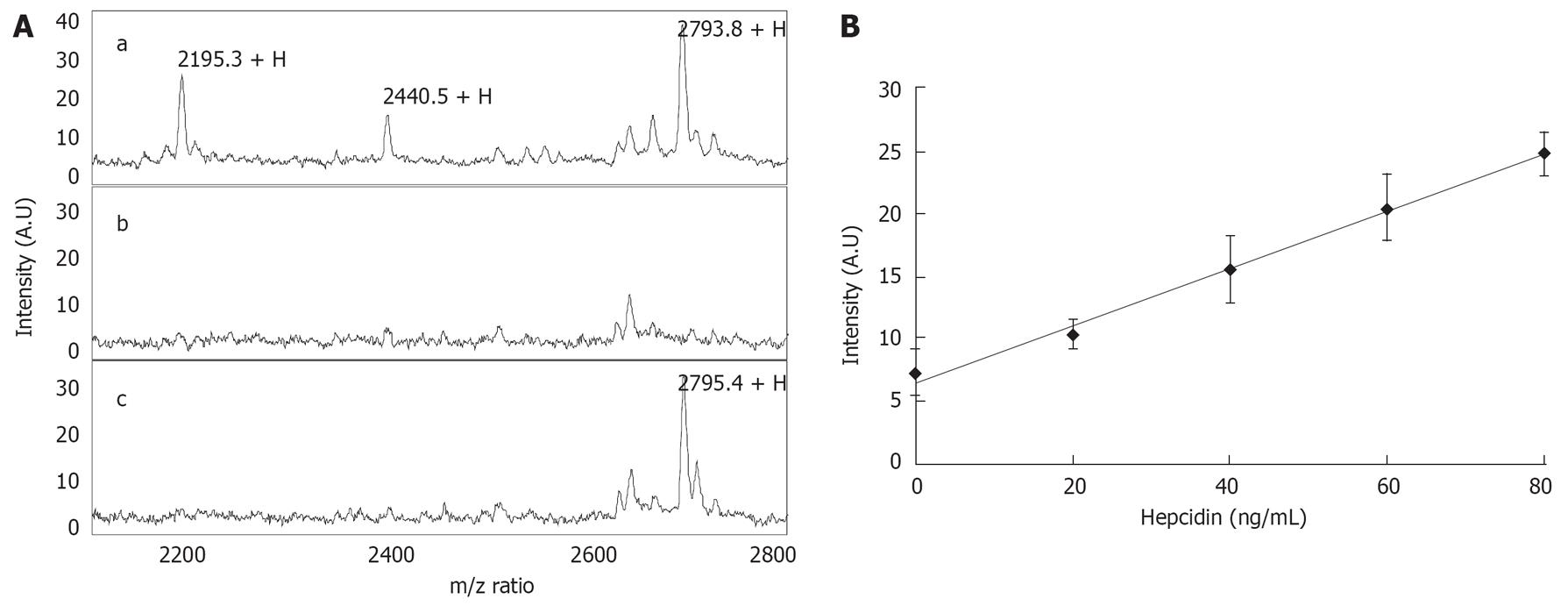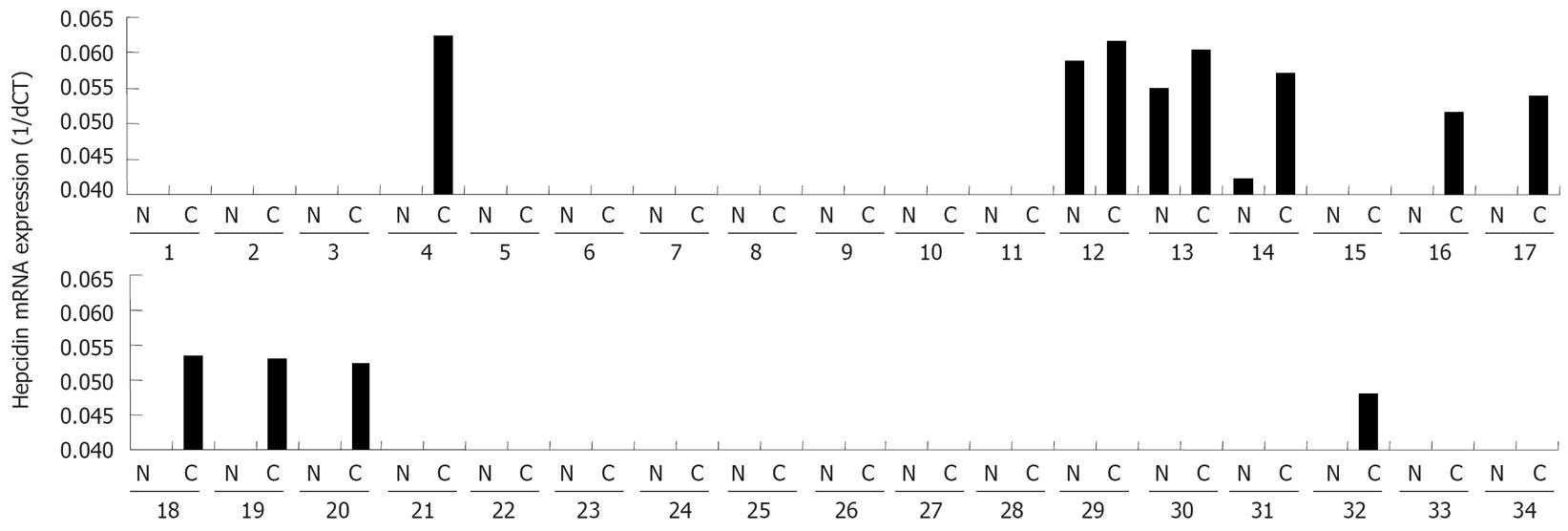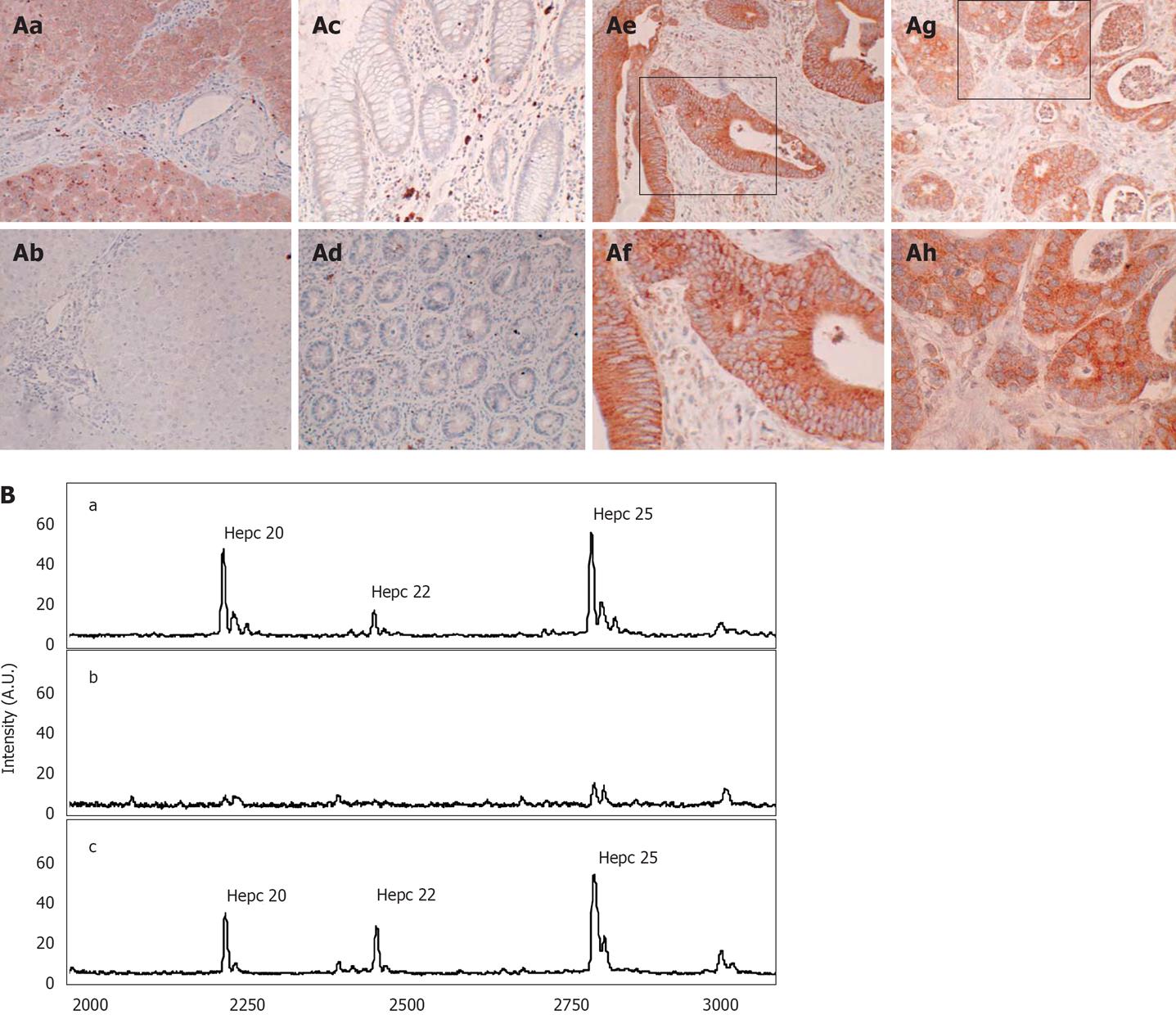Copyright
©2008 The WJG Press and Baishideng.
World J Gastroenterol. Mar 7, 2008; 14(9): 1339-1345
Published online Mar 7, 2008. doi: 10.3748/wjg.14.1339
Published online Mar 7, 2008. doi: 10.3748/wjg.14.1339
Figure 1 Validation of hepcidin expression in urine by MALDI-TOF MS.
A: (a) A human urine specimen showing the two dominant forms of hepcidin; hepcidin 20 (m/z 2195.3) and hepcidin 25 (m/z 2793.8). In addition the degradation product of hepcidin 25 hepcidin 22 could also be detected by MALDI-TOF MS (m/z 2440.5); (b) A human urine specimen completely devoid of hepcidin which when spiked with synthetic hepcidin 25 clearly shows a detectable peak at 2795.4 (c); B: Synthetic hepcidin was spiked into a low hepcidin containing urine sample at concentrations between 0-80 ng/mL and analysed by MALDI-TOF MS followed by analysis of the hepcidin 25 peak intensity.
Figure 2 Hepcidin expression is associated with T-stage of colorectal cancer.
Expression of hepcidin 20 (m/z 2195) and 25 (m/z 2793) was determined in urine samples of 56 colorectal cancer patients by MALDI-TOF MS, before and after desalting with desalting beads (Desalting MALDI-TOF MS), and SELDI-TOF MS and analysed with respect to T-stage. Expression of hepcidin 20 was not altered with T-stage by any of the three techniques. However, all three techniques demonstrated a significant increase in hepcidin 25 expression in T4 cancers compared to T1. Statistical significance compared to T1 (aP < 0.05); Statistical significance compared to preceding T-stage (cP < 0.05). Error bars denote 2 SEM.
Figure 3 Hepcidin mRNA expression in colorectal cancer tissue.
Using Real Time RT-PCR on 34 cancer specimens (C) each with adjacent normal uninvolved mucosa (N) we demonstrate that hepcidin mRNA expression could be detected in 34% of colorectal cancer tissue specimens (10 out of 34). mRNA expression is presented as 1/dCT. Positive control included human liver. Negative control included omission of cDNA.
Figure 4 Cellular localization of hepcidin in colorectal cancer tissue.
A: To determine hepcidin cellular localization in colorectal tissue immunohistochemistry was performed with a hepcidin specific antibody (Abcam 31877). (Aa) Human Liver; (Ab) Human Liver, incubated with both hepcidin antibody and immunizing hepcidin peptide; (Ac) Normal colon; (Ad) Normal colon with crypts in cross section; (Ae) Colorectal cancer (x 20); (Af) Colorectal cancer (x 40); (Ag) colorectal cancer (x 20); (Ah) Colorectal cancer (x 40). Boxes denote area subsequently magnified; B: Immunocapture of urinary hepcidin. (Ba) A human urine sample containing hepcidin 20 (m/z 2193.6), 22 (m/z 2438.2) and 25 (m/z 2792.0) was subject to immunocapture with either (Bb) protein G sepharose or with (Bc) protein G-sepharose and a polyclonal anti hepcidin antibody. Immunocaptured proteins were then eluted from the protein G sepharose and analysed by MALDI-TOF MS.
- Citation: Ward DG, Roberts K, Brookes MJ, Joy H, Martin A, Ismail T, Spychal R, Iqbal T, Tselepis C. Increased hepcidin expression in colorectal carcinogenesis. World J Gastroenterol 2008; 14(9): 1339-1345
- URL: https://www.wjgnet.com/1007-9327/full/v14/i9/1339.htm
- DOI: https://dx.doi.org/10.3748/wjg.14.1339












